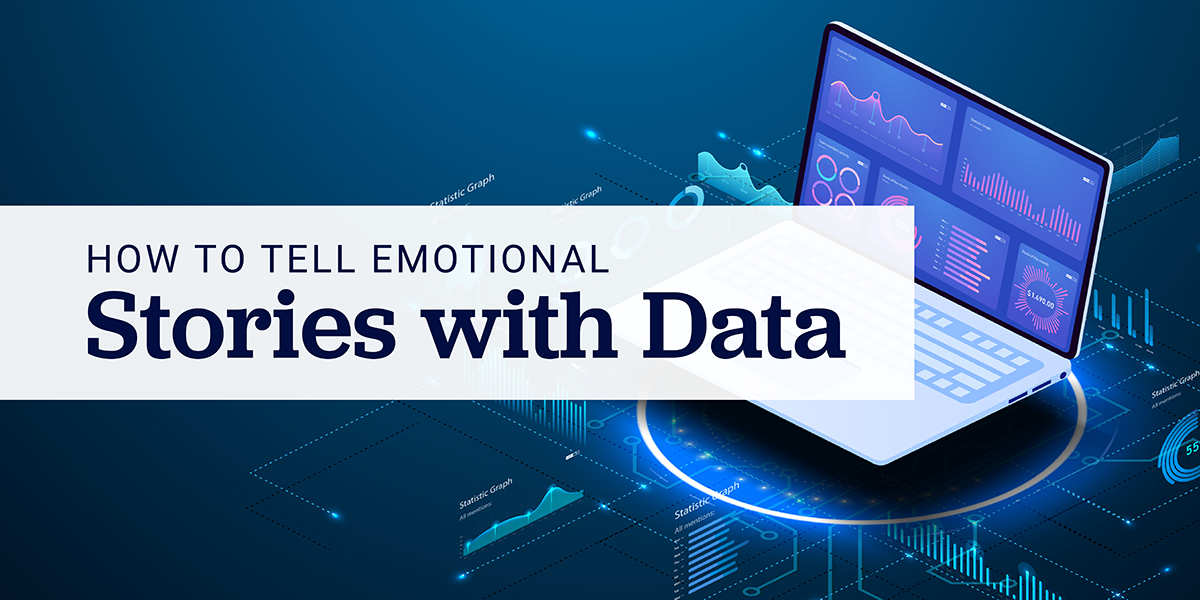How to tell Emotional Stories with Data
Ilia Jones | May 2021

Businesses today have access to plenty of information. Using the latest technology, it’s easier than ever to get your hands on data. Whether it’s your target customer’s age, gender, location, shopping preferences, or a combination of all of the above, you can probably find out.
The question is, what do you do with that data once you have it? If you’re presenting it, it’s important that you find a way to tell a powerful story. The human brain is biologically programmed to respond to stories rather than spreadsheets filled with numbers. By finding a way to pack your reports with emotion, you’ll pack a much bigger punch than if you merely shared the numbers.
But how do you go about turning your bland data into stories that pop? Here are some tips to help.
Know Your Audience
The first question to ask yourself is, where are you presenting this information? If it’s your own team, you probably already know your audience fairly well. If you’re presenting to clients or wrapping the data into your marketing materials, it’s important to consider your market there, as well.
One great way to learn more about your audience is to create user personas. Then, as you’re putting your data together, keep those personas in mind. You can then refine those personas as you get to know your audience better.
Use Visual Tools
If you regularly read reports put together by other experts, chances are you’ll stumble upon a pie chart or bar graph along the way. There’s a reason for that. These visual representations of information capture the eye, getting the point across better than text ever could.
Whether you’re sharing your data as part of a presentation or incorporating them into a report, images help tell the story. Along with graphs and charts, consider including photos that enhance each point you’re making.

Add the Human Touch
Once you know your audience and have the general layout, it’s time to tell your story. Your data can often do that for you. The key is to look at the information and pull out a narrative. What story is the data telling?
The key with data storytelling is to make sure you’re focusing on the humans behind the numbers. Think about the information your audience cares about most and focus on that. Then use a combination of text and images to paint a clear picture for your audience.
Weave Your Story
Most importantly, you need to make sure you’re doing more than tossing data at your audience. Numbers aren’t as interesting as the story you’re telling.
Example: “Sales are down, and here’s the proof. The reason sales are down is that we pulled back on advertising, and here’s the proof of that. If we invest more in advertising, sales are projected to increase over the next quarter, and here’s the proof of that.”
Storytelling that evokes emotion is one of the best ways to engage your audience. It’s important to look at the data and determine what story it’s telling. In some cases, the story may tell itself.
If you’re interested in boosting your emotional storytelling, ArcStone can help. With a free consultation, you can get an idea of how we can help you. Contact us today to schedule a time to meet with one of our digital strategists.
